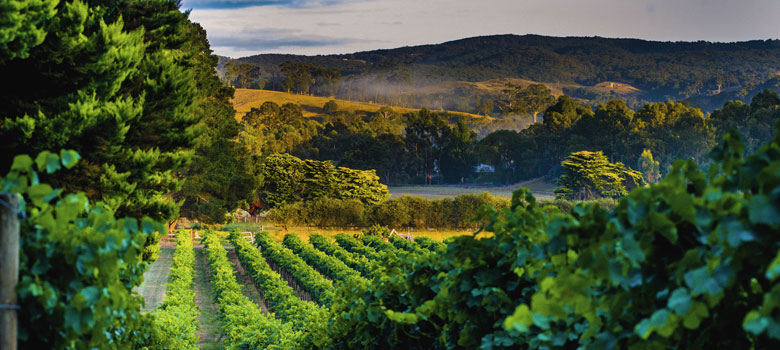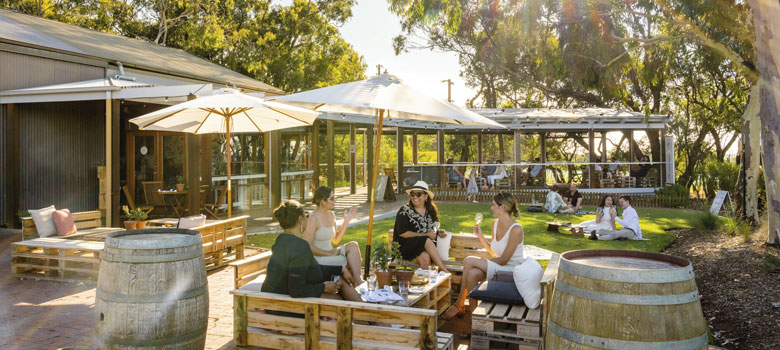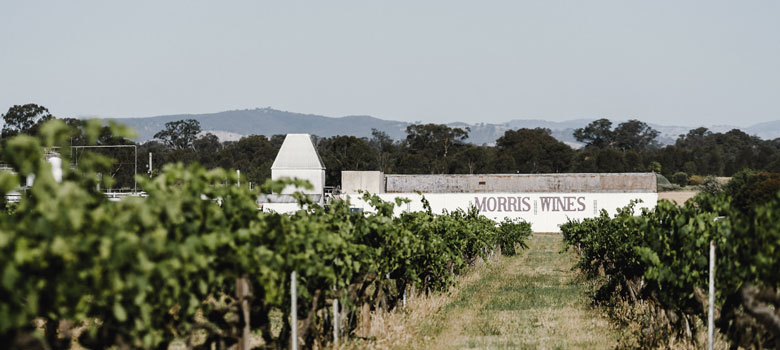
Wine
Traditions in Wine
As the Australian wine industry progresses into the future, some traditions are well worth preserving. On the third Sunday of February, Murray Street in the Barossa town of Tanunda comes alive with a colourful procession.
The Tanunda Band provides the soundtrack up front, followed by young locals carrying the heroes of the day, the first grapes of the vintage, accompanied by winemakers and viticulturists. And in the middle of them all is a group clad in bright red and gold flowing robes – figures of pomp adding a sense of ceremony to the occasion.
The Barons of Barossa come out every year to not only take part in the parade, but also to declare the vintage and bless the first grapes. Theirs is a tradition dating back to 1975 when a group of Barossan wine luminaries came together with the motto of “Glory to Barossa” and the aim to “to proudly and enthusiastically support Barossa wine, viticulture, gastronomy, heritage and the arts.”
While the Barons began as a male fraternity, the group has evolved with the times and today its ‘Grand Master’ is Yalumba’s chief winemaker, Louisa Rose. As Louisa describes, philanthropy has always been at the heart of the organisation and over their 46-year history, their contributions have been many.
Left: The founding members of the Barons of Barossa; Right: The current Grand Council with founding Baron the late Colin Gramp
“The Barons have raised a lot of money that they’ve given back through their foundation, and also in other ways. We’ve done things like help to fund the Barossa high schools’ winemaking subjects, recorded oral histories for some of the more senior people around the Barossa over the years, and supported preservation through local groups, including organising a series of videos about preserving some of the Barossa’s food heritage.”
Despite these contributions, Louisa explains, as most of their work is done behind the scenes, many locals don’t know much about the Barons beyond their participation in the vintage parade. This has changed recently, however, with the opening of The Barossa Cellar.
An initiative of the Barons, this multi-million dollar project was established to store a collection, Louisa describes, “of the best Barossa wines, cellared perfectly, to be used as mature wines for promotion of the Barossa”.
As well as housing over 6,000 bottles from 90 wineries, The Barossa Cellar is now home for the region’s wine community; the Barossa Grape and Wine Association, the Barossa Wine Show and is a space for regional wine initiatives.
It is also home to a unique one-hectare vineyard planted last year with cuttings from 35 of the oldest Shiraz vineyards in the Barossa. “It’s capturing the DNA of the oldest Shiraz vineyards in the world.” Another way the Barons are preserving tradition for generations to come.
New directions
Speaking of generations to come, the Australian wine industry is full of families whose winemaking traditions date back to the mid-19th century and look set to continue into the future. Among them is the Hardy family, whose name became synonymous with Australian wine back in 1878 when Thomas Hardy established Tintara winery in McLaren Vale.
Since then, various family members have carried on the association with wine, including fifth generation Geoff Hardy, who in 1980 went out on his own and created what’s known today as Wines by Geoff Hardy.
Today, the tradition continues, but in a new direction, with sixth generation Bec Hardy becoming the first female vigneron in the family’s 170-year history. Bec has taken over the ownership of the Pertaringa brand from her father and in doing so, she says, they’re adding a “modern twist.”
“While we respect and value the hard work of generations before us, we don’t let it constrain or define us,” she explains. “Still, it is a wonderful opportunity for my family and our small team to carry that connection with the past forward and we continue many of the traditions, such as a commitment to making quality wines. But for us it’s about creating something personal, as well as creating a tangible asset for the future.”
Left: Bec Hardy with her husband Rob Dolan and their daughter Matilda; Right: The young Bec Hardy with her father Geoff
One of Bec’s first actions to put her own stamp on things has been to appoint a new winemaker – Bec Swincer, who brings with her 20 years of experience across three continents. She’s also refurbished the Pertaringa Cellar Door. As Bec explains, “We want it to be a welcoming space for people to relax all year around. We’ve also launched special, intimate dining experiences at Tipsy Hill, our home in Blewitt Springs.

Above: Enjoying the revamped Pertaringa cellar door
This is all about giving people a wine and food experience that’s a bit different. We welcome guests into our home, provide them with a local, seasonal menu matched with wines from our portfolio, and we all dine together – giving people a real ‘insider view’ and sharing stories passed down through generations of the Hardy family.”
a fortified future
Australian wine was built on a tradition of fortified winemaking and while it’s a style that’s no longer front and centre, its future looks certain thanks to some enthusiastic young winemakers.
Among them is Simon Killeen who, with his label Simão & Co., is the seventh generation of his family to follow the fortified path. He fell in love with the style following a childhood immersed in his family’s vineyards and now feels, he says, “an obligation to get it right and to make sure people can still learn about and enjoy these wines. Call it the equivalent to a ‘lost trade’, once the knowledge is lost, it’s gone for good.”
He’s since educated himself on the traditional Portuguese varieties, including spending a vintage in the Douro Valley, and now produces a vintage fortified using traditional Portuguese methods, complete with foot stomping the grapes.
While Simon is excited by the fact that some wineries are experimenting with new styles such as fortified viogniers and Pinot Noir ruby ports, his love still lies with the originals. “The best wines are still the great Muscats and Topaques and Australian Port styles or aperas,” he enthuses.
And Simon is optimistic about the future of these wines. “My favourite thing,” he says, “is seeing a new set of younger winemakers taking on the role of caretaker or guide to these wines. These people (Jen Pfeiffer, Tim Dolan, Madden Morris, Matt Woo, Charlie Seppelt, Tash Arthur, Paul Burnett and Justin Purser, and hopefully, some would include me) will be the ones imparting their sage wisdom of fortifieds to another set of winemakers in the future.”
a Sparkling contribution
While most Australian wine styles have their origins elsewhere, a tradition that’s unique here is that of Sparkling Shiraz. First made back in 1878, it’s a style that’s continued to find favour.
As Debbie Lauritz, the winemaker behind the Hancock & Hancock Sparkling Shiraz from McLaren Vale, describes, its appeals lies in the fact that it “brings the best of Shiraz together with Sparkling – the lovely fruit of a Shiraz wine, bright red berry fruits and hints of spice, with the lift and effervescence of Sparkling.”
It’s a style that stands the test of time explains David Morris of Morris Wines in Rutherglen. “I have had the pleasure of trying Sparkling Shiraz wines from the 1940s and 1950s, and these wines were drinking very well, with complex bottle aged character with rich and generous flavours.”
Left: Winemaker Debbie Lauritz of Hancock and Hancock; Right: David Morris at his cellar door
Morris Wines have evolved the tradition by adding 20-30% Durif to give, David says, “extra flavour and weight.” And it’s a wine that leaves an impression, he explains. “Because it is unique, when customers or journalists visit the winery from overseas, they really enjoy the wine. While we do not export our Sparkling Shiraz Durif, we do still receive orders for our wine from people in Europe and despatch direct.”

Above: Morris Wines of Rutherglen
While its appeal extends throughout the world, its fanbase remains small, restricted, Debbie says, to “only a handful of wine savvy drinkers.” One of the many great Australian wine traditions that needs greater celebration!